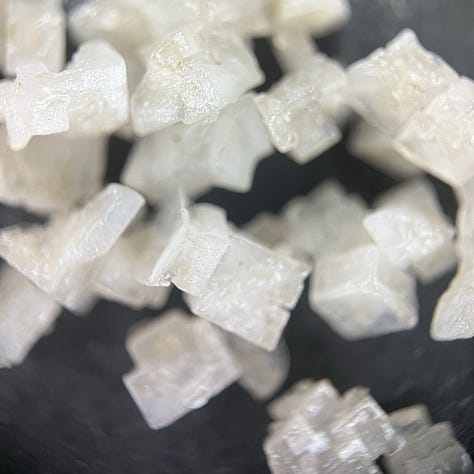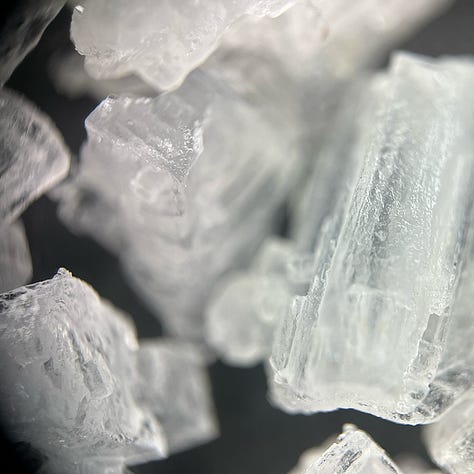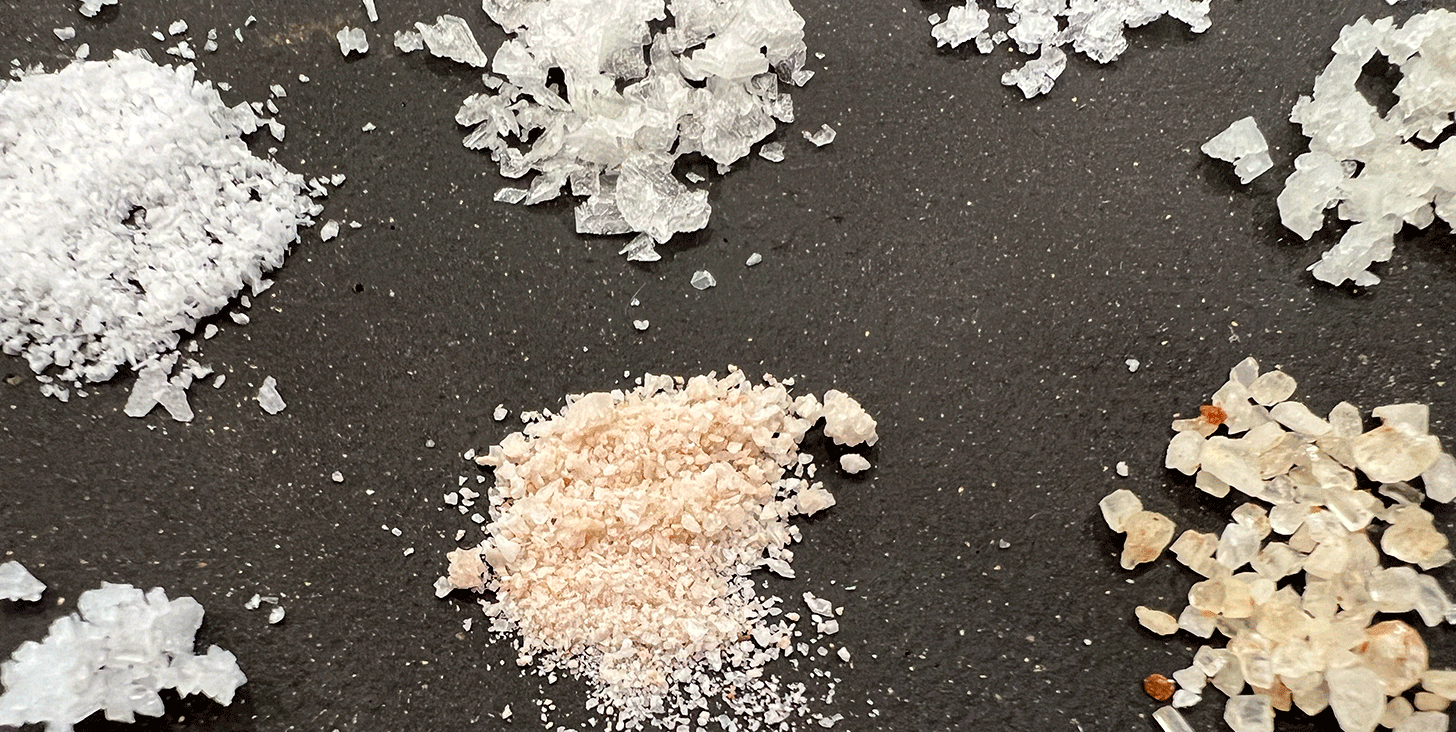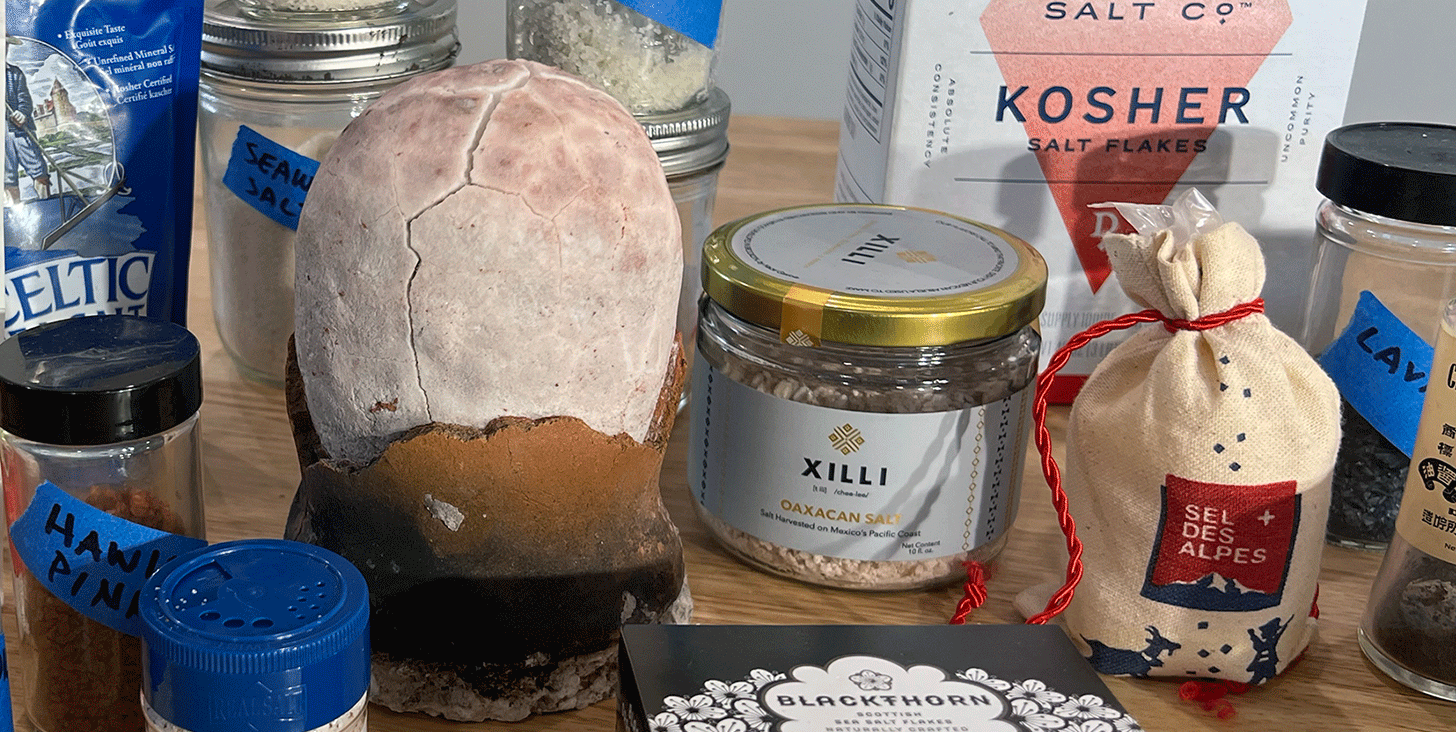Exploring Salt: Varieties and Shapes Make a Difference
Heads up, this is a long post but good to save for later as you start your salt journey with us :)
When was the last time you thought about the type of salt you use? It’s something we consume every day but often take for granted. From different origins that impart minerals to shapes that change the texture, to a pop of color on a finished dish, each type of salt brings something unique to the table. In this post, we’ll explore the diversity of salts and their uses.
Exploring Salt Varieties
There’s a whole world beyond the standard table salt most of us grew up with. Each salt type has a different mineral content, flavor profile, and best uses in cooking. Most of these have subsets but here are the highlights.
Table Salt: For many people, the classic table salt is the everyday option but it’s also the most refined and processed, removing minerals, adding iodine, and additives to prevent clumping. It’s finely ground and quick to dissolve. It will taste very salty compared to the others. (I use it to clean red wine from fabric)
Sea Salt: Harvested from evaporated seawater, sea salt retains trace minerals that vary depending on the location. This gives it subtle flavor nuances, making it a popular choice for finishing dishes. Read more about the differences between table and sea salt here.
Pink Salt: With its gorgeous pink hue, Himalayan, Peruvian, and even Utah salts aren’t just pretty—they have a mild earthy flavor, perfect for seasoning everything from veggies to dessert. Mined from ancient salt beds or deep in the mountains, its color comes from the naturally occurring iron oxide.
We do a side-by-side in our tastings with Redmond Real Salt and Dhanalife sal de Maras (we wish Redmond would move away from so much plastic packaging)
Kosher Salt: Known for its coarse grains, kosher salt is popular among chefs for its ease of handling and clean flavor. It’s ideal for seasoning meat, as the large crystals make it easy to control the amount added. Perfect for everyday cooking and baking, brines, and salting your water.
Diamond Crytal is the go-to here (gotta say we are a bit bummed with the new packaging. We know they needed an update but they missed an opportunity with such a legacy brand)
Flake Salt: Light and delicate with a satisfying crunch, flake salt is perfect as a finishing salt. Its crystals dissolve quickly on the tongue, making it ideal for adding a final touch to dishes.
Maldon and Jacobson are easy to find in stores, but we’re currently addicted to the softer texture of Blackthorn
Black Mineral Salt (Kala namak) Funky and good for you, black salt is a classic ingredient in many South Asian and Ayurvedic dishes. Being fired in a kiln at extremely high temperatures in clay vessels, black salt is usually very finely grated for use and adds a sulfurous, tangy flavor to dishes. Don’t confuse this with Black Lava Salt, which has been infused with activated charcoal.
Two in our pantry are from Burlap & Barrel and X Roads (yep we caved and bought the egg)
Salt’s Structure Impacts Flavor
Did you know that salt’s texture can change the whole experience of a dish? Let’s get into the shapes and textures of salt.



Fine Salt: Great for blending quickly into sauces, marinades, and baked goods, where you want the saltiness to be evenly distributed without adding texture.
(Need a fine salt and don’t have any, a mortar and pestle will do the trick on other salt sizes.)
Coarse Salt: Often used in brines or marinating meats, coarse salt adds a robust, salty flavor without dissolving as quickly. It’s also used for decorative crusts, like on pretzels.
Flake Salt: Flake salt has a light crunch that melts in your mouth—perfect for that final touch on a salad, steak or even dessert. It’s a pretty tasty topping :)
Rock Salt: Unrefined and large-grained, rock salt is not used directly in cooking but is perfect for ice cream making or as a white bed to lay your fish or shellfish for serving.
Salt as an Element of Culinary Exploration
At A Dash Of…, we think salt can be as interesting as any ingredient in your pantry, but also a storytelling experience for your table. The next time you cook, experiment, taste, and find the salt you love best for each dish.
If you need recommendations for your next dinner party, join our SubStack as a member and we’ll be happy to help you become even tastier.




